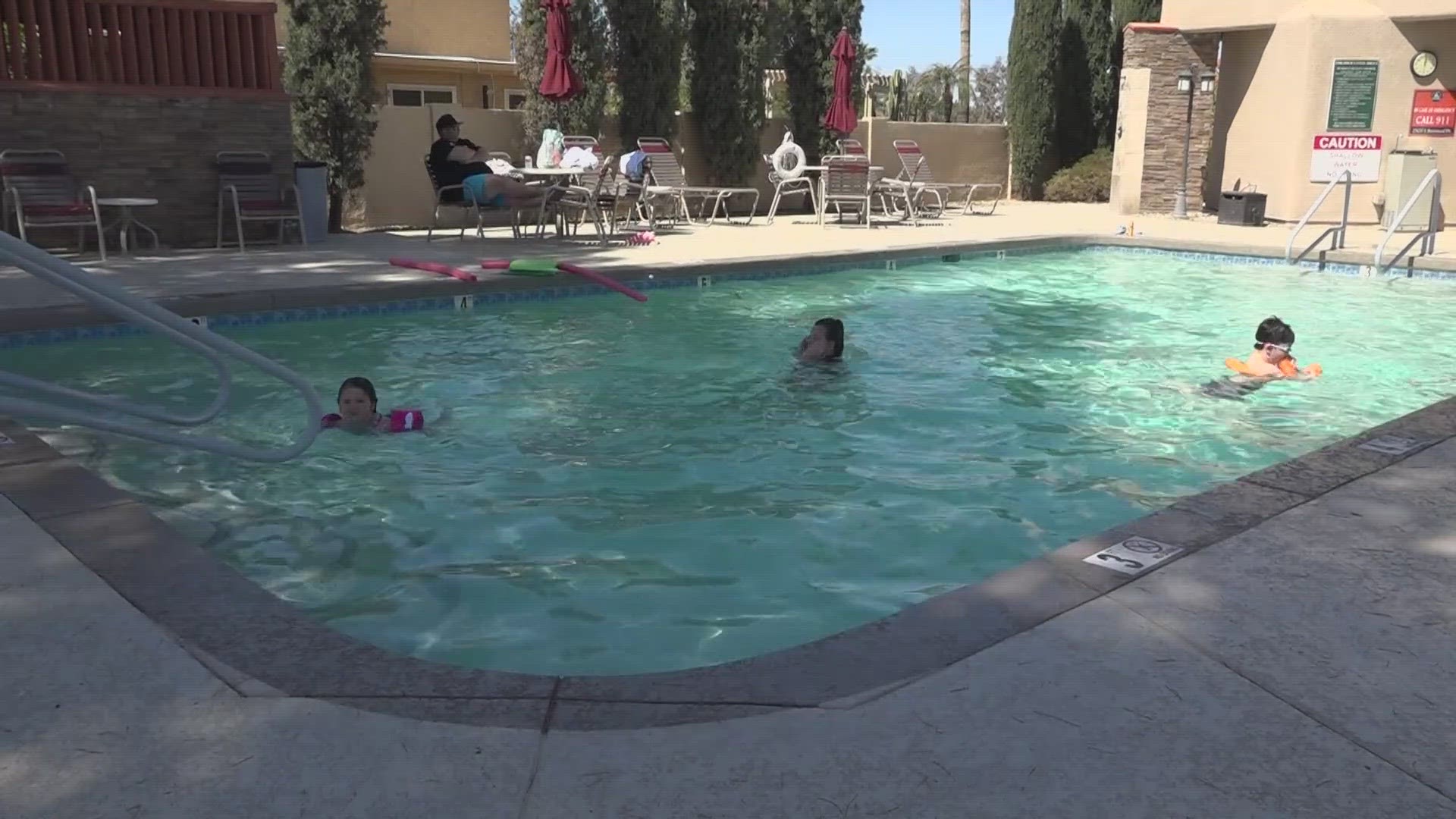PHOENIX — A recent report from the Arizona Child Fatality Review Team found that every child’s drowning over the last year could have been prevented. The problem? People don’t really know what drowning looks like.
In films and television, drowning is often depicted as a loud, frantic affair — screaming, splashing, arms flailing. In reality, drowning is quiet. A child goes underwater. They don’t come back up. Their parents never even knew what to look for. Tracey Fejt with the Drowning Prevention Coalition of Arizona is doing everything in her power to fix that.
“It’s silent. It's not like in the movies, there's not a bunch of thrashing. And so kids go under the water so quickly,” she explained.
In addition to her work with the coalition, Fejt works as the injury prevention coordinator for Banner Health in Chandler. When it comes to stopping needless harm, she’s the expert.
“We can prevent all these deaths. We just have to be vigilant and do what we need to do to keep our children safe,” Fejt said.
She recommends the “ABCs of Water Safety.”
A: Adult Supervision
When at a party or community pool, designate a watcher — a trusted adult who will keep an eye on the kids, Fejt recommends. It’s an intense, important task.
“That person truly needs to be assigned. They shouldn't be eating, drinking, talking, playing on their phone, they should literally be watching those kids,” Fejt explained.
You can think of watchers like lifeguards: it’s their job to survey the situation and alert others if something happens.
Be sure to check that kids are wearing U.S. Coast Guard-approved life jackets — not just floaties.
“We don't want to see just floaties on kids' arms,” Fejt said. “Floaties actually have a caution on them that warns parents that they're not life-saving devices. So we'd rather see a kid in a life jacket or puddle jumpers.”
State Farm provided a look into the signs of drowning. Someone who is drowning and unable to breathe can't call for help. The person goes quiet and may be hyperventilating or gasping. They will often be upright in the water, not using their legs. Their eyes look may glassy or be closed. Watch for if they look distressed or if their head is low in the water.
Drownings can happen quickly and silently, so be extra tuned in when things get quiet.
B: Barriers
Like most adults, kids love water.
“Kids are so attracted to the water, and we make water fun, you know, that's where families hang out,” she said. And if they have a chance to hop in, they’ll probably take it.
That’s where barriers like locking gates and tall pool fences come into play. But not every gate is created equal. Fejt has a few specifications that she recommends.
“It needs to be self-latching, self-locking. I always want it to open out — if a child is trying to get in, it's going to take them a while to figure out ‘how do I get around?’”
Anything to slow or stop a child’s unsupervised access is better than nothing. Alarms, door locks and monitors are also good additions.
“Having that high lock on that sliding glass door is a perfect thing to do,” Fejt said. “Or just having a way that the kids cannot get out those doors. You can also have alarms and other different things. But the more layers and the more barriers you have between your child and that pool, the safer they're gonna be.”
C: Classes and CPR
The earlier you get your child into swimming classes, the better off they’re going to be. How early can you start? Probably sooner than you think.
Some swim schools around the Valley offer classes for kids as young as 4 months old. Teaching kids how to float and climb out of the pool themselves is just another layer of safety. But it’s not everything.
“The earlier you can, the better. But then I don't want you to think ‘Oh, my kid can swim. So they're drown-proof.’ You guys, we've had Olympic swimmers that have drowned,” Fejt added.
When it comes to the ABCs of Water Safety, C also stands for CPR. Fejt considers it a last line of defense, but it’s never a bad idea to get or renew your CPR certification.
Even with all these prevention methods, Fejt urges parents to not get complacent.
“We all need to be under the impression that it can happen to us.”

